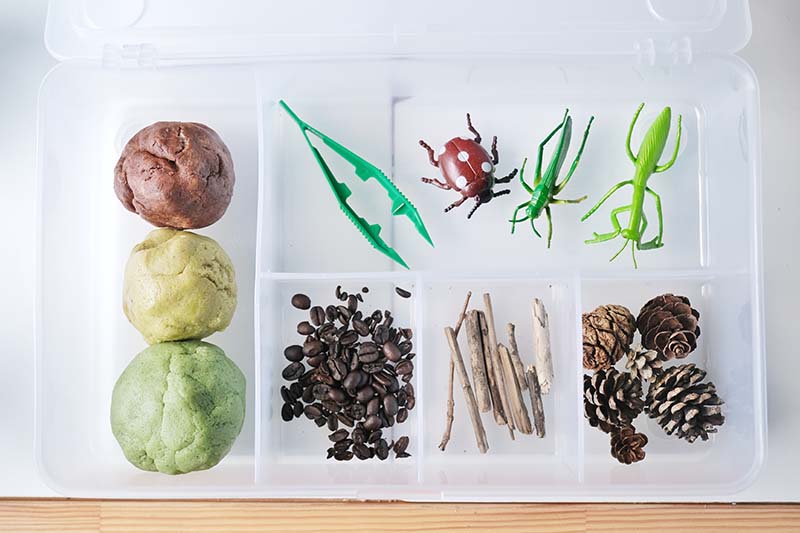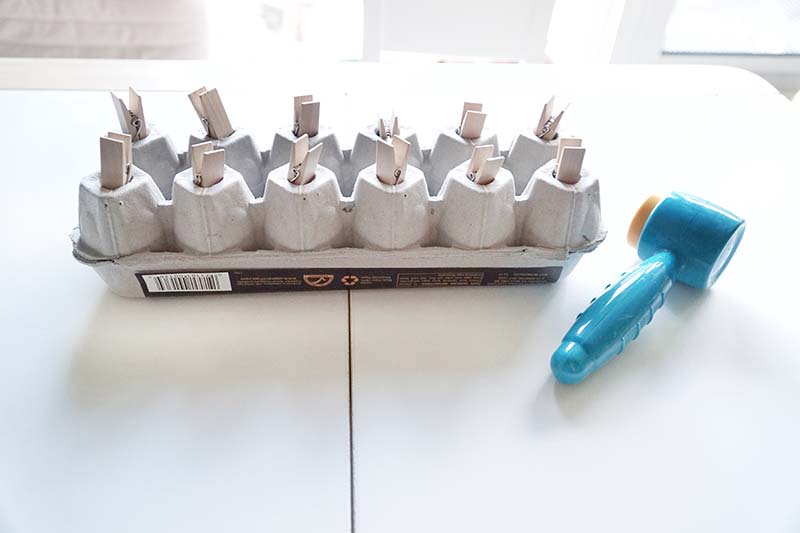Writing is an important lifelong skill for literacy and communication. As parents/carers, we wish to support our children in writing. My hope is that my daughter enjoys and takes pride in writing, developing good penmanship.
The Montessori sensitive period for language is from birth to 6 years of age. There are several aspects of language, such as spoken language, written language and reading. The sensitive period for learning how to write is from 3.5 to 4.5 years of age.
This coincides with science which tells us that children’s hand development becomes ready for starting to write at 4 to 5 years.
10+ Fun Pre-Writing Activities to Support Preschoolers in Writing
Prior to learning to write, we can begin preparatory work to set our children up for success. This includes familiarisation with the written language (the alphabet for English / Chinese characters for Mandarin / symbols for Math) as well as building up our children's hand dexterity, control and strength through fine motor activities. These are pre-writing activities.
I've compiled 10+ fun pre-writing activities suitable for older toddlers to preschoolers, categorised into:
- (1) the ones which build interest in written language + simultaneously working on fine motor skills;
- (2) ones which in general build up fine motor skills:
(1) Pre-writing fine motor activities which also reinforces interest in written language
These are the various mediums I've engaged my daughter in:
- Stickering: This was Miss 3.1's favourite for a long time, as she explored how stickers work and enjoyed the task of peeling them off and sticking them on.
Simple templates for stickering words/characters/symbols of the written language can be drawn or digitally created. Below is an example of learning the Chinese character of moon. I drew small circles within the character outline. A simpler way could be writing the character in a thick brush stroke and having children sticker along the stroke. Here are line and letter sticker tracing ideas from Chalk Academy.
In place of dot stickers, dot markers could also be used.

- Salt writing tray: The sensory input from writing on salt helps with memory retention of the strokes that construct the word/character/symbol. Chalk Academy has a post on how to set up sensory writing salt trays.
Also learnt from this article that the fingertip is the most sensitive part of the body with lots of touch receptors, which when stimulated, help with building of neural pathways in the brain.

Outdoor sand writing is an extension of the salt writing tray. Sand pits and sandy beaches serve as a natural, large-scale canvas that doesn't limit children's expression in a restricted space. Children can choose to use twigs to make imprints in the sand, or their fingers. Muddy grounds are also nature's writing canvases.
- Play dough word sculpting: Reader books with enlarged words/characters/symbols as well as big flash cards are great for encouraging this activity. I would place an upcycled plastic sheet over the page/card, secure using binder clips or wooden pegs and invite my daughter to shape play dough into the words/characters/symbols.


- Pipe cleaner word sculpting: Pipe cleaners (aka chenille stems) can also easily be twisted and shaped into words/characters/symbols. Bonus: there's math learning involved as children have to consider how to use varying lengths of pipe cleaners to compose the final word/character/symbol.

- Geoboard: This is a DIY geoboard I made using cardboard box, plastic straws and elastic bands (from grocery packaging). It's fun for my daughter to create words/characters/symbols by stretching the elastic bands over the plastic straws.
You could place flash cards with words/characters/symbols for children to refer to during the course of this activity.

- Tracing: It is imperative to model writing in the presence of your child. It indicates to the child the value of writing in an adult's world, demonstrates how it is done (with focus and attention to detail), as well as inspires them to emulate.
I like to create handwritten labels for items at home to build a print-rich environment. When my daughter sees me writing, she would grab a marker/crayon and ask to help. When such opportunities arise, I would write words/characters/symbols in pencil and invite her to trace over my pencil marks using a marker/crayon.


Other tracing ideas:
Write on cement pavement lightly in chalk. Invite your child to trace over using another chalk color to make the strokes bolder.
My friend A recently shared another tracing tip. Her son's Montessori teacher writes using a highlighter so the strokes are bolder and clearer, before inviting children to trace over them with any art tool of their choice.
Resist art painting: I've written words in white wax crayon and invited my daughter to paint over, revealing the words. I've also invited her to stick washi tape over words I've written in pencil on cardboard, paint over the entire cardboard, and then peel off the washi tape when paint has dried. Here's an example.
%20Craft%20for%20Toddlers-6.jpg)
%20Craft%20for%20Toddlers-3.jpg)
 Craft for Toddlers-Cover.jpg)
- Sensory rice/beans in puzzles: Remove alphabet/number puzzle pieces and let children transfer sensory rice/beans into the puzzle gaps using tongs/scoopers or fingers (pincer grip).
I've seen many Pinterest executions of this idea, and can't be sure which idea originator to credit this idea to. If you've an inkling, please let me know so I can give proper credits.
(2) Fine motor activities in general
- Open-ended process art: Drawing, painting and coloring using hands or a variety of art tools, gluing, masking tape, scissoring and tearing - these are varied ways to encourage children to refine their fine motor skills.


Here's a fun cardboard nail-trimming activity I made when my daughter expressed interest in using the nail clipper, but was too young to wield it.
- Play dough: There's so much to do with play dough which require different hand and finger movements - twisting, kneading, tearing, scissoring, flattening, pressing, mixing etc. To extend interest in play dough, tinker boxes that allow children to creatively use play dough in making sensory small worlds can engage them for a longer time.

In place of play dough, slime/modeling clay/kinetic sand etc are fun sensory mediums for fine motor refinement too.
- Tongs object transfer: Object transfer activities using tongs are particularly useful to help children strengthen control, coordination and strength in small muscles of their hands. These same muscles are responsible for enabling children to wield scissors, grasp a pencil and write.
- Water pouring: Pouring (as well as scooping & filling) is a hands-on way for children to build fine motor skills while getting tactile feedback (their hands getting wet from spilling etc), and is a great way for math learning too (less/more concept, volume etc).
Providing a towel for wiping up spills, sitting the tools on a tray, or carrying out the activity in the bathroom/sink could be ways to prevent/limit water damage to the surroundings.
- Practical life activities: When children help out with household tasks around the house, they are perpetually using their hands in new and different ways! Commonly seen Montessori practical life activities include using a knife/peeler to help process vegetables for meal preparations, scrubbing the table, arranging flowers, misting the windows and spraying them as well as polishing their shoes.
These activities also build children's identity as contributors to the household, and empower them to be more independent in taking care of themselves and their environment.
Pin punching work: I've not tried this activity personally due to a lack of materials but I've seen Montessorians provide children with push pins and cork boards/felt to facilitate pin punching work. See The Kavanaugh Report's setup here.
Threading/Embroidery: Nearing 3yo, I started my daughter on her first embroidery tray, inspired by How We Montessori. Sewing is a wonderful skill to learn for children, as they could make crafts and begin to patch up holes in garments with it.

- Hammering: I introduced hammering activities when my daughter was a young toddler, after observing her interest in banging on things. Inexpensive or regular household materials can be used to make DIY hammering toys.

An example using wooden pegs and egg crates. Another one below using IKEA snack clips and cardboard boxes. Tip: Make the holes a tight fit for the pegs/clips so there is resistance when pushing in. This creates tactile feedback to the child.

At 2.5yo, my daughter showed more fine motor control and understood instructions better. That was when we moved on to hammering using a toy wooden hammer and real nails. Hammering bases can be egg crates, cardboard, soft wood (like plywood), cork bases, or thick stacks of felt.

Trust and Practice
In our prepared home environment, my daughter has freedom to explore and manipulate her toys, belongings, and household materials safely and consistently since she became mobile. Unless it's unsafe or unsanitary, we allow her to touch and feel things that interest her around the house.
Note: Care has to be taken to ensure a safe environment for children. In our house, we do not use pesticides or toxic cleaning chemicals (else, they'll be locked up and out of reach) and items that pose suffocation/choking risks (ribbons/balloons etc) are provided with supervision.
We also encourage a culture of respecting and treating our everyday items with care, introducing glassware to her from an early age. This teaches responsibility, as well as to handle things with focus and precision.
From the time she started solids, we have advocated self-feeding. Family meals are when she sits at our table, tucks into the same food, and helps herself to the communal dishes. When she shows interest in doing the things we do (e.g. use of chopsticks), we equip her with child-sized ones so she could work on acquiring the fine motor and practical life skills.
All these hands-on practice, day in and out, add up. Many aren't even "activities", they're just ordinary everyday moments, which count towards the child's readiness in writing.
I hope your child enjoys these pre-writing ideas!




